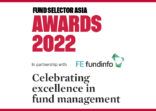“He who rides a tiger is afraid to dismount” is a Chinese proverb that warns about embarking on a course of action that is difficult to reverse. It is a sentiment to bear in mind as we enter the Year of the Tiger and industry boffins forecast what to expect from China in 2022, writes our sister publication, Portfolio Adviser.
The latest official figures from “Our World in Data” show that confirmed Covid-19 cases in China hit a peak of 3.03 per million people in February 2020, before plummeting and remaining below 0.8 per million until December 2021 when they started to creep up again.
Its efforts to contain Covid-19 have been swift and severe, with the government abiding by a policy of “zero Covid2, which has seen entire cities and millions of people under strict lockdown.
The tiger riding proverb could apply to the Chinese government. Its policy of zero-tolerance against Covid has to end at some time. The impact on the economy and general population has been substantial and questions are being asked about how much longer the situation can continue without lasting economic damage.
Capital Economic’s China PMIs for January stated: “The latest survey suggest that the pace of economic growth slowed in January due to a combination of weaker foreign demand, cooling property activity and efforts to contain recent outbreaks.
“We think momentum in industry and construction will remain weak over the coming quarters. But we see some scope for a recovery in services activity as authorities fine-tune their zero-Covid approach.”
So, what does this year have in store for investors in China?
Private sector shake-up
Columbia Threadneedle Investments’ portfolio managers George Gosden, Threadneedle (Lux) Asian Equity Income, and Jin Xu, Asia Equities, expect “an interesting year for China’s equity market given the pledge by the People’s Bank of China (PBoC) to use monetary tools to spur the economy and boost growth”.
“Last year, China’s regulatory reset made the headlines, alongside its ‘zero Covid’ policy and deleveraging within the property sector. But we believe we are past the point of most pain.
“We expect the regulatory cycle – which started in the back end of 2020 – to be more predictable as we move into elections this year, with the government focusing on the notion of common prosperity. The team believes that the dismantling of the private sector – which accounts for 60% of China’s GDP and employs 80% of the urban population – is not the objective of the government.
“We would argue that many of the policy objectives are, in fact, on the ‘wish lists’ of Western economies; for example, data privacy and curbing monopolistic practices. This can only be positive in the long term, with reduced income inequality and a rise in the middle class likely to accelerate the economic rebalancing towards consumption.
“In addition, deleveraging measures in the property sector are showing signs of easing, such as relaxing mortgage availability. We expect continuous monetary and fiscal easing going forward. We have already witnessed some of these measures more recently with the PBoC announcing reserve requirement ratio cuts in the back end of 2021 and interest rate cuts in January 2022.”
They added: “One of the main themes we play in our portfolios is the decarbonisation – as China seeks to achieve peak carbon emissions by 2030 and become carbon-neutral by 2060. Our team has placed a lot of importance on responsible investment, which will become increasingly more important throughout 2022.”
Toothless tiger
“The Year of the Tiger will not prove as fearsome to investors as its namesake in our view,” says Jimmy Chen, portfolio manager of the Comgest Growth China fund.
“2022 could be the year inflation takes off around the globe. If so, China might prove a refuge as inflation remains low and monetary policy is easing. We also expect the pace of the regulatory crackdown to cool down.
“The nation remains home to some incredibly innovative companies, for example in video gaming, electric mobility and biopharma industries. We are convinced that the Chinese government will continue its long-term pursuit of innovation and reform. There are many opportunities in China and we believe 2022 is a good year to explore them.”
He adds: “For international investors China offers diversification with developed markets. With China’s PE discount to the US close to a decade peak and strong estimated earnings growth, we think low correlation might play out in favour of Chinese equities in the year of the Tiger. China demands a somewhat contrarian attitude as China has often performed strongly when it seemed to be down and out.”
Authorities retain control
Nicholas Yeo, co-manager of Abrdn China Investment Company, comments: “Stability is the number one priority for the Chinese government, as indicated in the recent China Economic Working Conference. Policymakers in Beijing are aware of the risks that the economy is facing and have pledged to provide the necessary support to ensure economic stability.
“Meanwhile, the regulatory measures imposed by the government came as a surprise. But we believe that these changes should be seen in the context of a fast-changing technology landscape.
“Regulators are trying to keep pace with innovation and while a full reversal of the recent regulatory tightening towards the property and internet sectors is unlikely, we may see incremental loosening of the regulations, which may inject a dose of positivity into the market. This also means that the worst period from a policy standpoint may be behind us. However, it is worth noting that the policy tightening was a proactive rather than reactive measure, meaning authorities still retain control of the situation. On that basis, we remain cautiously optimistic.”
China 3.0
“In Chinese culture, the tiger a symbol of strength and bravery, precisely the traits investors need to embrace and take advantage of the attractive opportunities in China equity, give the prevalent bearishness after a bruising year,” says the Polar Capital China Stars Team.
“2021 was a year of significant importance, as it marks the end of what we call China 2.0, and 2022 the beginning of China 3.0.
“China 1.0 started in 2001 when it joined the World Trade Organisation (WTO). It can be summed up in one word – urbanisation. China 2.0 was all about digitalisation. It kicked off in earnest in 2011 when Tencent’s WeChat app launched, after the 3G mobile network brought cheap and ubiquitous internet access to everyone.
“It is not surprising to find that in an urban China 1.0, the best wealth creators were the energy, construction, transportation and commodity companies, and in a digital China 2.0, it was all about consumer internet companies.
“So, what is China 3.0? In a word, it is inclusiveness. The inclusion of 600 million low-income left-behind to the consumer economy, the inclusion of considerations of the environment, society and other stakeholders in its growth model, and the inclusion of other high-tech industries in addition to the consumer internet as its source of innovation.”
The team adds: “The Year of the Tiger marks the beginning of China 3.0, a new paradigm of a more inclusive economy, more sustainable growth and accelerated pace of innovation. As China picks itself up off the floor, we believe there are plenty of opportunities in well-priced and high-quality companies with high structural growth. It may be one of the better times to buy this new and better China story.”
Evergrande effect on property sector
“Policy has been on top of investor minds in China, which has had a meaningful impact on several industries. While some policies caught investors by surprise, we think the government’s intention has been clear and consistent,” says Wenli Zheng, portfolio manager of the T Rowe Price China Evolution Equity fund.
“Take the policies on property, healthcare, and education, for example. The overarching goal is to build a more sustainable and equitable society. On the other hand, the regulations on online platforms aim to create an open, more competitive ecosystem, instead of ‘walled gardens’. There are cyclicality elements to China’s regulatory environment, as the idea is to ‘fix the roof on sunny days’.
“China’s regulators tend to carry out structural reforms when the economic situation is favourable, rather than weak. We believe the recent countercyclical policy moves can help China’s economy become more resilient against future external shocks.
“We see mispricing opportunities created by the recent regulatory concerns. With investors shying away from anything related to the property and healthcare sectors, we believe there are companies with unique business models able to navigate the environment successfully. For example, this includes select companies in property management services, furniture retail, and medical devices.”
















